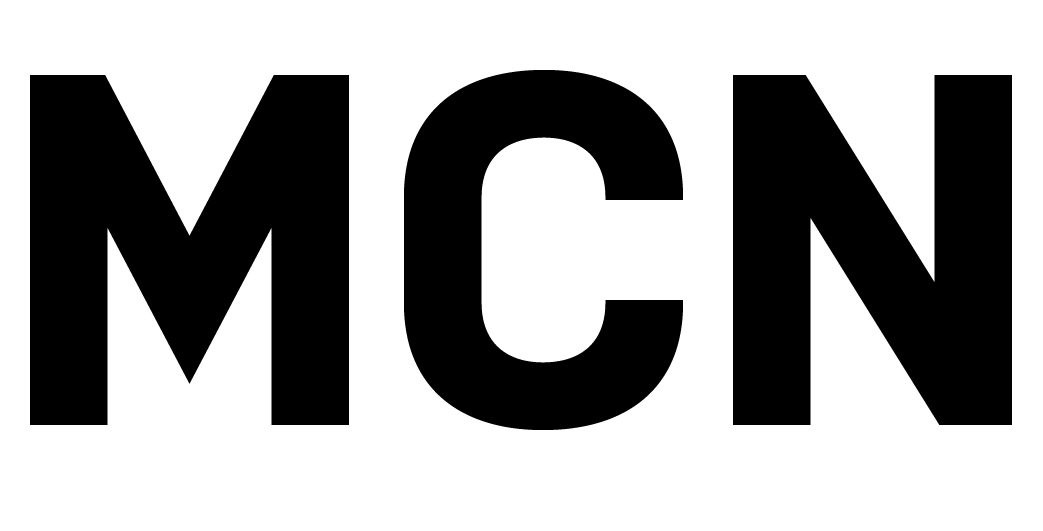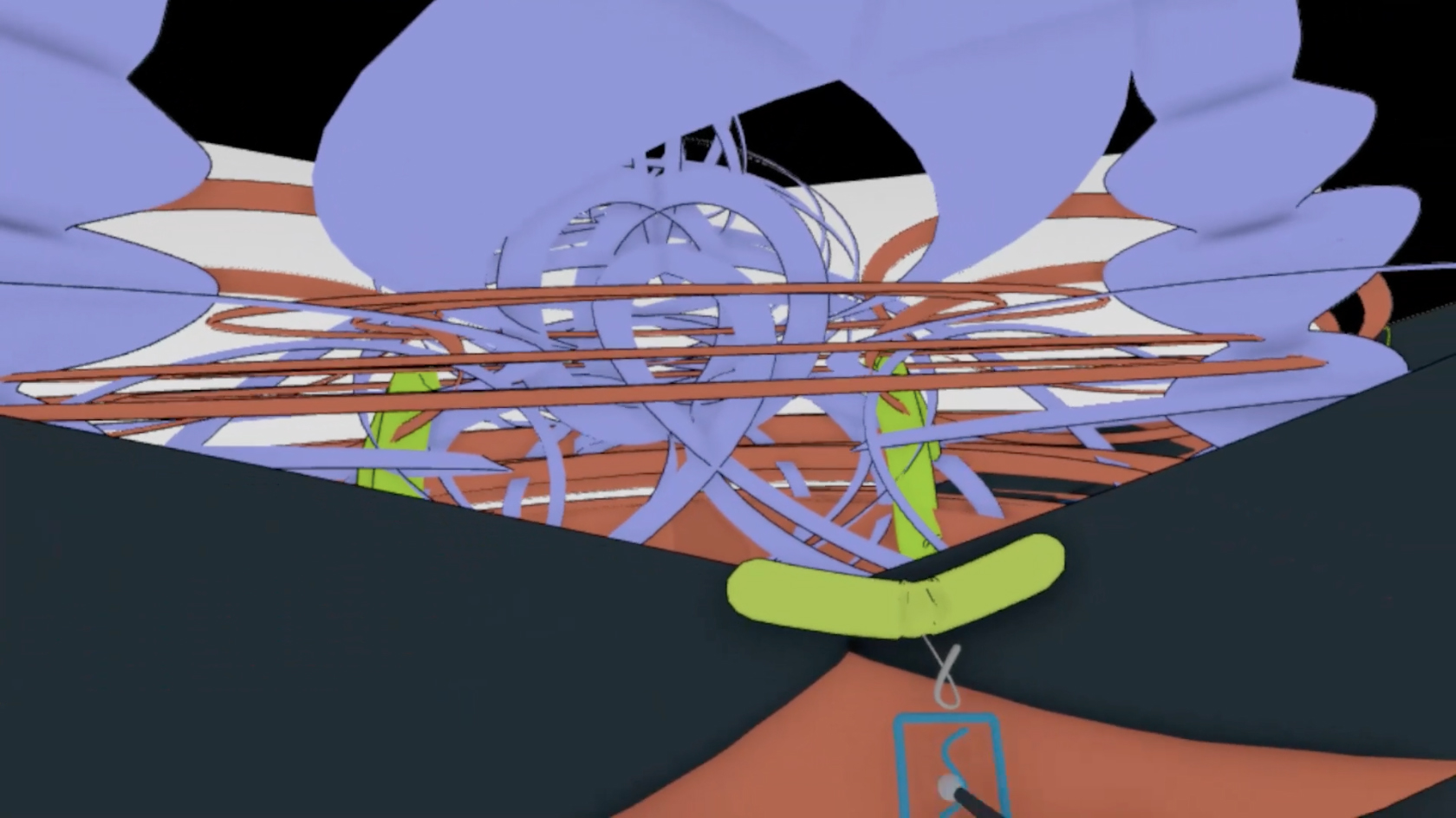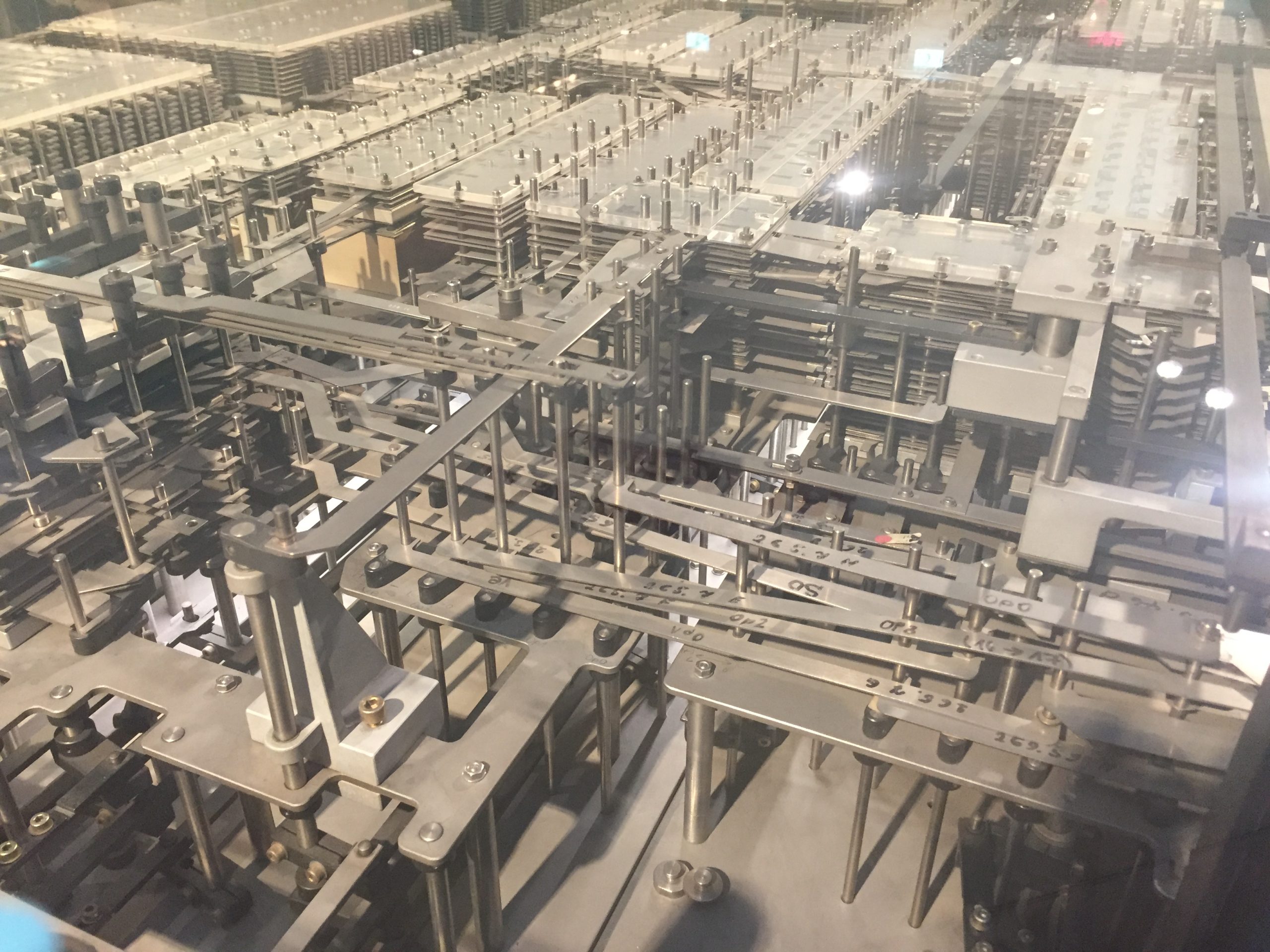November 12, 2018
Thinking about city building and city planning guided and controlled by large multinational companies it is becoming clear to me that the idea of polis has completely given way to the marketplace. What will happen is that companies in proposed partnerships with local governments indirectly and directly draw the lines of districts and neighborhoods, legislate through the provision of resources to communities, and enforce ideals using the mechanisms both in and outside government.
Companies have been in partnerships with cities around the world to design and build smart cities. Companies like Sidewalk Labs, Uber Movement, and IBM Smarter Planet/Smarter Cities, to name a few, have been looking towards building the cities of the future as their next venture. I think this is problematic since the current cozy relationship of business and governments have had some devastating results. So, what is being proposed to cities? It would seem that they are proposing free computational organizing solutions to the messiness of everyday life to be handled by the freemarkets.
In a specific case Molly Sauter assesses SideWalk Lab’s blind neoliberal optimism in Toronto. What Sidewalk fails to see is succinctly put in her essay, City Planning Heaven sent,
“ Urban frictions, the encounters between mutually unintelligible or barely intelligible cultures and populations are what propel an urban environment and its cultures forward. Utopias are conceived of as friction-less ecosystems, which have achieved a type of idealized stasis. Similarly, the very concept of productive intelligibility is antithetical to the smart city project, which rests its entire operating premise on the notion that all relevant aspects of life within a smart city can and should be intelligible to the systems that operate it.”
What sidewalk Labs is proposing is using the infrastructure of a smart city to solve Toronto’s problems, to make it a leading city, a utopian vision of the future. The process will involve scooping up the data from millions of inputs, sensors, and users to organize and structure a flexible multi-use and efficient city. Sidewalk Labs proposes to use all of that data to the benefit of the citizens of Toronto, by solving problems and creating a responsive and efficient urban environment. They are asking to take the reins on decisions currently left to the emergent properties of people of the city. A multinational company will be the one to decide the shape of things to come. A business will function as city government. A neoliberal city management project.
What makes this project neoliberal is that at the heart of planning, organized zoning, and special districts for this future city is a multinational corporation whose health is dependent on returns to financial investors, and it is not tied to the duties of a well functioning government. It is profit motives over public welfare. Classic neoliberalism. Free market civic responsibility? That’s a paradox. Citizens are not stockholders.
What’s worse, citizens can’t vote a company out of city government since there simply is not a mechanism for it. Companies are not responsible to the citizens of cities. If this is the case then representation in city government will evaporate.
City building projects I think always will take on this utopian dream. The proposed aim is to move the city forward but never mentioning what has held a city back. So it is suffice to say that what is not mentioned in the dream is just as important as what is. It is not a system of problem solving, looking at the situation on the ground and taking account of problems and nuances of the local community, rather it is an elevator pitch. Never taking into account the real problems of a city. What of the people in the service industry? How do they fit into this plan? The Homeless? Mental health services? What are the metrics for happiness in the city? Does a corporation have any accountability to the public it doesn’t really serve? So far, most publicly traded companies are beholden only to investors and shareholders.
That’s how the free markets operate. Its Economics 101.
So what makes it blind neoliberalism? Well, one doesn’t need to look far to find the fruits of these paradoxes. Puerto Rico’s debt crisis, was one admittedly started by its own government’s over spending. A serious malfunction however it was only enabled to become a severe tragedy by banks selling bonds not only during the crisis, but after the crisis to recover their debts so they could pull out leaving Puerto Rico’s government unable to cover hospitals, schools, pensions and other vital services. Laws were then passed to enable financiers to dictate Puerto Rico’s financial responsibilities in the banks favor. No civic responsibility there. Does anybody remember Enron bankrupting California? I do. Famously, Enron completely defrauded California’s energy commision and then filed bankruptcy leaving California taxpayers billions in debt.
Businesses in the business of government is an untrustworthy alliance. Using our data pulled from the city couldn’t be a worse idea.
The natural emergence of real city life and the systematized operation of a smart city would be a conflict between the inhabitants of a city and the company running it. Sooner or later it would work against its citizens. What recourse with a private entity paying politicians dark money(speculative, but likely) would there be? Lawsuits? Large multinational companies can push protective legislation(see Puerto Rico), absorb those costs, cut their losses and subsidiaries and later grow these back like a tail.
In the end the citizens whose data has become commodity lose agency. It’s even worse for those underserved in cities. Citizens usually pushed to the margins and robbed of resources in their communities.
So affluent citizens will buy into a city where their freedom of choice will be narrowed with market solutions monopolized by the largest and most powerful multinational companies in the world. They will also lose privacy as all their information and data becomes saleable and open to third party “bad actors” as much of it already has. They will have no recourse to multinational companies and the most powerful politicians will be hanging by the pursestrings.
I don’t want to completely dismiss the benefits from new solutions by civically minded people in the tech industry. I’m not questioning their motives either. It’s a nuanced conversation however it is critically important to think about the consequences of governments and business in city planning, and really examine the polished rose-gold sales pitches of affluent techno-optimists. There is an old cliché worth paying heed to here, “The road to hell is paved with good intentions”.
Citizens, such as myself, are promised an efficient and responsive city environment to “improve quality of life” in this marketplace. Even if that were true, then what do the vulnerable have to look forward to?
After reading through the material for this upcoming weeks classes I initially had a knee-jerk reaction of disapproval. My internal compass points me towards acrimony for several reasons. I find it to be a drive towards a 24/7 economy that I think is not good for well-being in society. People already seem to define themselves by their jobs. I don’t think that phenomenon is new but the acceleration of an unbalanced life comes with the expectation that one should be married to their job. I don’t believe it’s healthy. That being said I wanted to dig a little deeper and and parse out some pros and cons of WeWork and WeLive to find what is happening and maybe extrapolate what is to come.

Pros:
Some pros That I found were directly from the WeWork website and expectedly they have many, so let me summarize the positive impact of this type of economic participation. One can purchase space that has maintained, stocked with amenities, provides access to specialized spaces like conference rooms, provides a network of other professionals, scale up with business growth, social and health activities, conferences and a sense of community. There is a very interesting phrase they use on the home page, “Space as an Experience” that I think sums up the core of what WeWork is.
For the individual, the CEO, the freelance designer, the entrepreneur this “experience” alleviates the cost, time and energy put into running and maintaining an office and supports what can sometimes be a very lonely project. It supports a lifestyle that young, energetic, ambitious, and sometimes creative individuals need to find a way in the world.
For society, I think they are responding to a decentralization of economic activity happening in urban districts around the world. Spaces like WeWork in urban centers where increasing numbers of young professionals are migrating may have some positive impacts from a broader perspective. There are a few good points made by 3 papers delivered at the Symposium on Decentralization and Urban Sprawl at the Brookings Institute in 2001. Some of the problems created by the suburban sprawl around cities include traffic, poor air quality, lost productivity in commutes, inequitable resource distribution, and infrastructure costs for utilities and roads.
Extensive decentralization of cities and the resulting development of the urban fringe bring new users to roadways, reduce open space, and require cities or suburbs to extend their utility services farther.
This intern causes stresses with the communities around the city that pay for the expansion, thus creating political tension.
Twelve states have enacted growth management programs, and 240 anti-sprawl initiatives appeared on November 1998 local and state ballots, with many additional proposals in November 2000.
Wouldn’t it be smart to encourage economies to live and work in the same place, or nearby to relieve these tensions, reduce traffic, increase productivity and air quality?
Cons:
Based on the reading from Our 24/7 Economy And The Wealth Of Nationsmy initial feelings about this evolving work life is substantiated.
the evidence that working nonstandard schedules are associated with poor physical and mental health is clear. Physical health problems include increased fatigue, insomnia, stomach and digestive issues, higher cardiovascular risks, being overweight. And the group is also tends to make unhealthy lifestyle choices, such as smoking and drinking alcohol.
Chronic fatigue, sleep deprivation and the resulting stress are all major obstacles to productivity. There are also psychological disturbances associated with sleep deprivation, including adverse effects on memory and reaction time, as well as chronic anxiety and depression.
What this boils down to is a negative impact on the well being of individuals. I find this concerning however I think the expectation that we must do this to rise in social and economic class or to maintain a level of subsistence in society is maybe more insidious. Our general well being is maintained by having some financial security and it is reasonable to expect that this may come at the cost of our physical and mental health.
What about when our personal lives overlap our workspaces? This is inevitable point of contact in an extended college dorm for adults. Keeping these things compartmentalized and seperate has been an ideal to a degree, for a reason. I’ve seen a few troubling incidents with christmas parties and offices romances. I can’t say whether it is good or bad however I think caution is a good thing. I’ve read that the parties there can get out of hand, and in an environment as it has been described, on the website and by journalist its not hard to imagine that a frat-ish party might break out.
As Ginia Bellafante describes in her article, What the Sharing Economy Really Delivers: Entitlement an incident that happened to her friend at a WeWork in New York. This awful behavior is not exclusive to Wework for sure, but it doesn’t help that their culture is infused with party culture slogans.

Conclusions:
Thinking about my experience as a freelance visual artist and watching my fellow friends it is clear to me that we are very much a part of that decentralized economy. Most of my associates are 1099. We participate in a sometime solitary and demanding economy that lacks an inherent community. It would be nice to have a place that takes care of office administrative duties, and creates a supportive community of like-minded individuals, helps with the environment and pollution, but I wonder at what cost does this come? What do I trade when I participate in this experience?
One of the things that came to me immediately after reading History of the the Urban Dashboard, by Shannon Mattern was the term “gamification”. Admittedly I don’t know much about it, but I have a general understanding of what it is. My basic assumption is this, gamification is the application of game mechanics to other forms of control and interface, like stock programs that tell you when to buy and sell. Using the language and mechanics of games, desire can be manipulated.
I know there is much more involved, so I started some cursory research to look into it.
What is gamification?
According to Merriam Webster’s Dictionary,
gamification
gam·i·fi·ca·tion | \ˌgā-mə-fə-ˈkā-shən \
Definition of gamification
: the process of adding games or game-like elements to something (such as a task) so as to encourage participation
Did You Know?
The basic concept of gamification isn’t new, but the word itself is a 21st-century addition to the English lexicon. The word refers to the incorporation of game elements, like point and reward systems, to tasks as incentives for people to participate. In other words, gamification is about making something potentially tedious into a game. Gamification is effective because it taps into people’s natural desires for competition and achievement. Teachers, managers, and others use gamification to increase participation and improve productivity. Gamification is also often an essential feature in apps and websites designed to motivate people to meet personal challenges, like weight-loss goals and learning foreign languages; tracking your progress is more fun if it feels like a game.
Other websites:
“Gamification is the process of taking something that already exists — a website, an enterprise application, an online community — and integrating game mechanics into it to motivate participation, engagement, and loyalty. Gamification takes the data-driven techniques that game designers use to engage players, and applies them to non-game experiences to motivate actions that add value to your business.”What Is Gamification?Gamification is the process of integrating game mechanics into a system that already exists to motivate participation…www.bunchball.com
I found this little bit interesting, Nick Pelling who claims to have coined the term, has laid out his intentions for gamification and a very simple and succinct way to think about it, “the underlying idea of gamification — making hard things easy, expressive, near-effortless to use.”
Who uses Gamification and what for?
Businesses making money, of course.
Business marketing has been at the fore of psychology since the “torches of freedom” days and have been able to reach the public in a more oblique fashion.
More than 77 percent of Americans own smartphones and many of them connect with brands through “micro moments,” Paul Polizzotto, president and founder of CBSEcoMedia, writes in AdExchanger. “Gamified ads may be the perfect way to attract this audience and have been shown to increase consumer engagement,” Polizzotto says.Gamification Co – The Leading Source for Gamification News & InfoThe Top Source for News, Companies, Research and Design Lessons for All Things Gamificationwww.gamification.co
Gamification in this case may seem innocuous when think about candy but when extrapolated onto other types of transactions, and areas of life it is alarming to say the least.
While I admit that I like Samantha Bee’s acerbic wit, and the intentions in this piece, I see this as another way to amplify tensions in this country, if that’s possible.
What from our life gets folded back into games?
I find this game to be a cynical view of life. I realize that the game is a pure fiction, so I’m not against it… however I will respond with a scene from Person of Interest.Prison Architect on SteamBuild and Manage A Maximum Security Prison.store.steampowered.com
Are there Positive forms of Gamification?
Well Samatha Bee’s app I think is a good attempt at it I found these a long time ago never really thought of it as “gamification” but I think it is just that — glad to dig it up, enjoy!
Robots tread a line in the imaginations between existential fear and utopian utility. The existential fear of being replaced by technology, to become an object of utility, or extinction by technology (robots, cyborgs, AI) in my opinion is a real collective fear. This fear is reflected in movies like The Matrix (1999), where by a turn of fate, and grievous error humankind has become the “battery” for a futuristic super-computer. To be precise humans have lost “self-hood” to become “object-hood”, a utility to fuel a future without humanity in the center of the universe. On the other hand, robots also fuel our utopian fantasies. The fantasy that human kind remains in control with the service of robots. Robots can be plough share or sword but they must remain objects to keep from threatening our position as center of the universe. This is also a staple in popular culture, the character R2D2, is very much an archetype. This robot has no motivation other than to help the human characters in the movie. R2D2 keeps human kind in the center of the universe and within the meta-narrative helps to move the plot. I also think it is important to note that R2D2 does not approach a resemblance of humans.
The “Uncanny Valley” as described by Masahiro Mori describes a revulsion or affinity humans have towards robots as they approach our likeness. In a diagram Mori points out the space between objects that are clearly not human or toy like and a full healthy human is a steep drop in affinity known as the uncanny valley. It may very well be that a objection to objects that approach human likeness are in fact a subconscious confusion of the dead and alive. The repulsion of robots that fall within the uncanny valley maybe a manifestation of the existential crisis humans undergo when examining their own selfhood. The meaning of selfhood is under threat when approaching objects that break the boundary self and object because human imagination relates all objects and meanings back onto itself. Any object that threatens the centrality and singularity of human life, threatens the meaning or uniqueness of human existence.
The uncanny that arises from this break down in meaning and existential threat can take root in Kristeva’s abject. Repulsion from human-like robots relate to abjection of the corpse and the root of unease or horror. The uncanny valley is a confusion of the object and what it means or is. The boundary between live and dead that a robot or simulation breaks confronts human centrality. The robot is the dead now seemingly alive encroaches on human uniqueness which ruptures the boundary between object and human.
It would make sense that media about robots, cyborgs, AI would reflect a confrontation of human existential crisis because it speaks directly to a fear of being dead or in proximity to death. The closer technology comes to looking, thinking or seeming like humans the more that fear, horror, or revulsion is realized. By the same token, it makes a lot of sense that media about those technologies would exploit desire to be master of fate, or domain- Center of the universe. Robots that don’t question human singularity will most likely fall outside of the uncanny valley and revulsion.
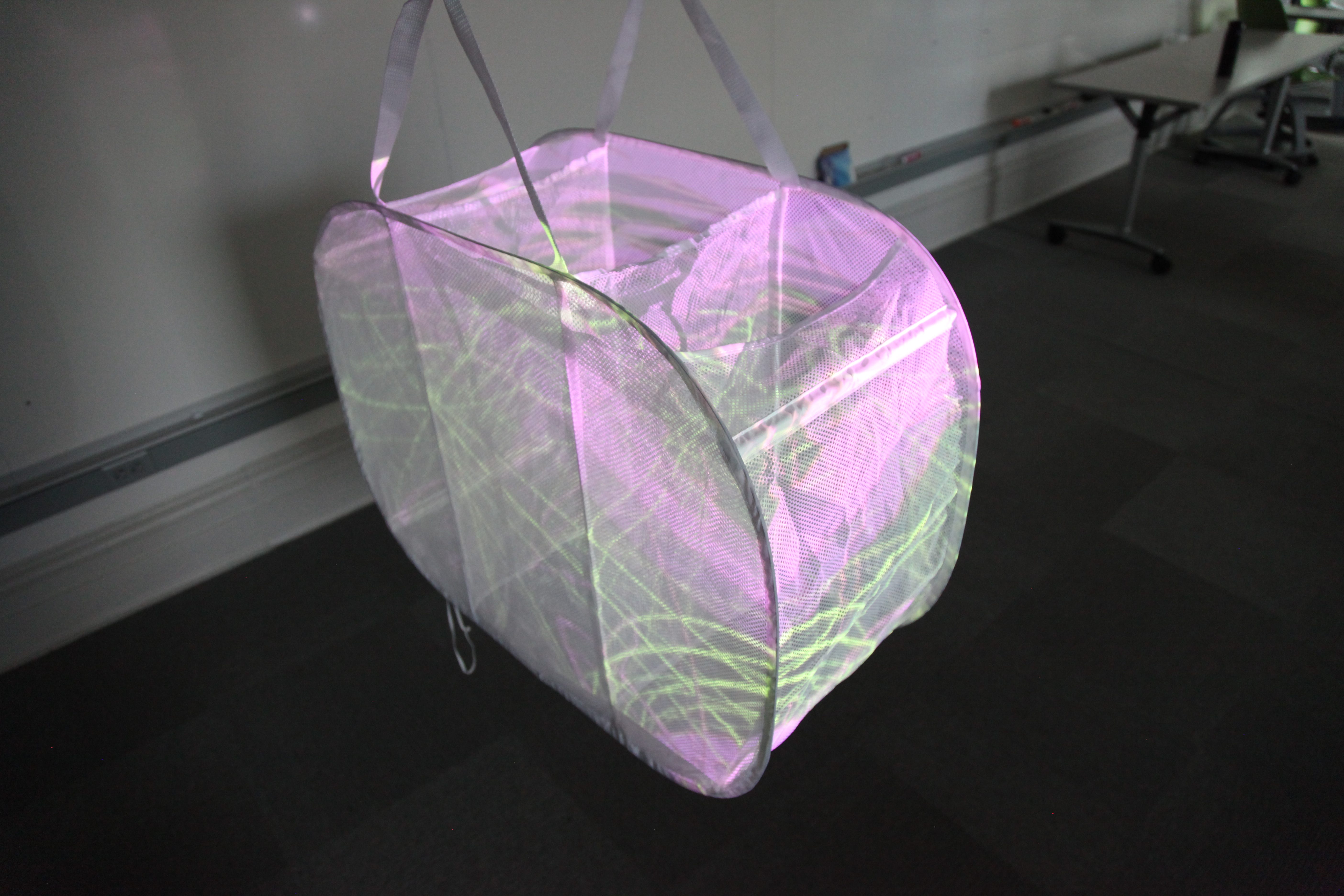
Activating Spaces is an experimental art project that takes on of the idea of multiple dimensions that space and bodies can inhabit. Firstly, it is important to note that this was done in collaboration with Emily deGrandpré an Architectural student here at CMU. We both had interest in experimentation with projectors and quickly seized upon the idea of creating and recording some experimentation in Gravity Sketch, a virtual reality design program and projecting them onto an inexpensive laundry bag.
While we both committed to this idea, we each did so with slightly different reasons. I will be speaking for myself here but there will be some overlap in our ideas because our discussions in this collaboration was generative and fruitful. You can read Emily’s paper here and find more documentation from the project.
I have been thinking about the reciprocal nature of bodies and spaces through the lens of virtual reality. Does VR alter the way bodies activate spaces and spaces activate bodies? I wonder how the nature of VR could be used to re-examine that relationship. My previous artworks engage bodies moving through virtual spaces, the marks and gestures they leave, and the performative nature of being in VR. Staying within that trajectory for this project I wanted to make gestural drawings in the virtual world that record the history of actions thus implying presence of a body. I also wanted to make gestural marks large enough that they become landscape or environment. Space, body, and action would be activated by each other and VR would be the tool to allow us to create, manipulate, and record the relationships of these elements.
The head mount display (HMD) was used as a video camera and so we used it to “fly through” the virtual marks by walking through the physical space with the HMD as well as set it on a tripod to capture our process of manipulation and creation. The projection being the final output of this project we thought about the view from inside the HMD to visualize what would end up projected onto the mesh. Neither of us had done this before so the process of making the VR artworks was experimental however looking through the HMD helped visualize our end, like a camera viewfinder.
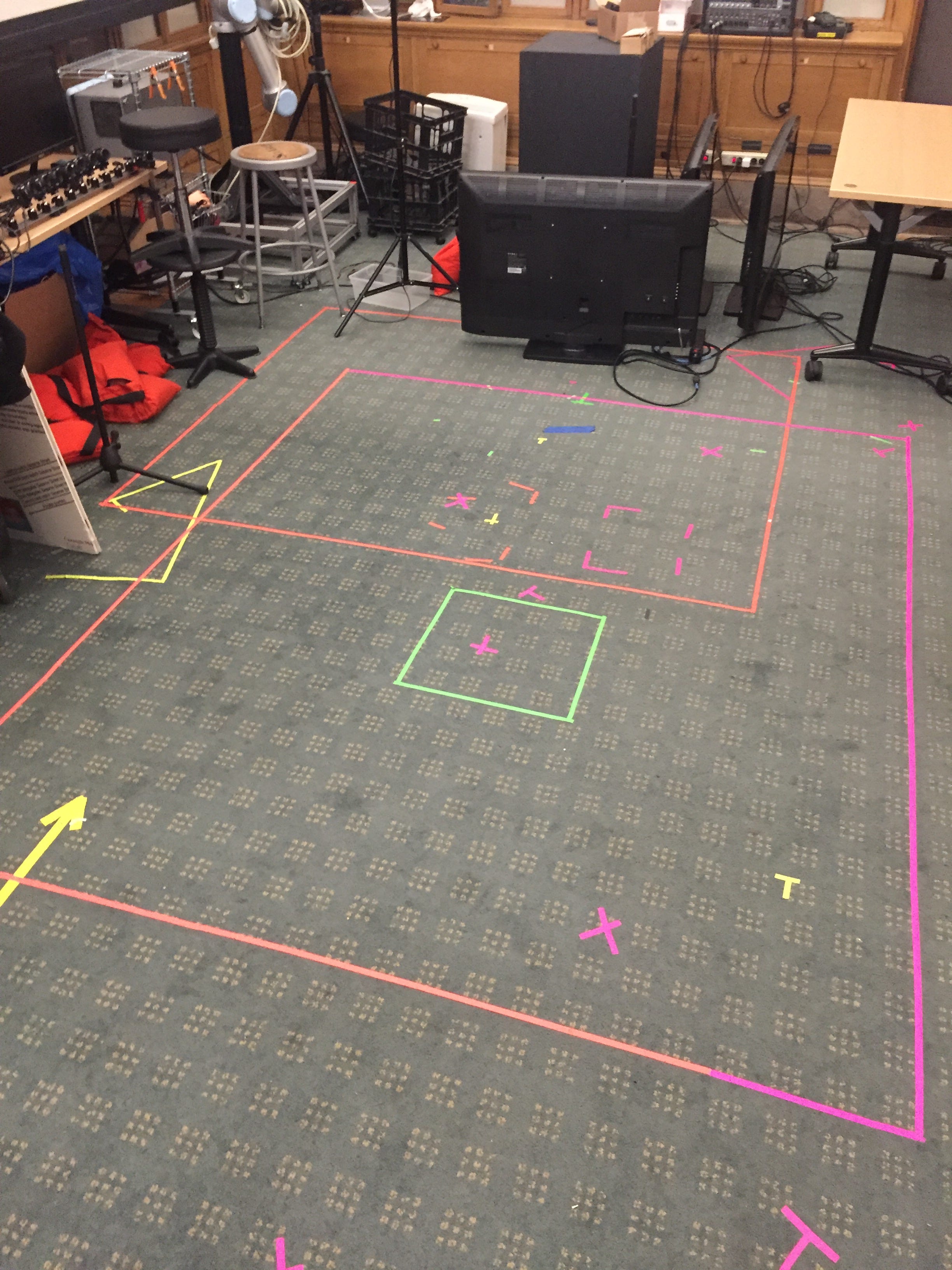
Moving and animating in the physical space was an experimental endeavor. We had not worked together before and come from different disciplines, so we needed a way to collaborate that allowed for experience and experiment. We agreed that some parameters were needed, so we marked off a physical space to work within (approx. 6’ x 7’), set music to pace ourselves, created three ‘acts’ (Emily, Michael, Group), and gave ourselves about 8–10 minutes each act. Gravity Sketch was then animated by the gestures we made in virtual space. Emily used her dance background in movement and gestural arcs to create a dense and rich system that reminded me of the tubes, veins, and organs found inside our bodies. My recording came from the measurements of my body twisting, my extended reach and arm lengths. I also played with the history button in Gravity Sketch, erasing my previous marks then repeating the action and mark. Our last “act” which we did together was created by measuring the space and relations between us. We did this with a tool in Gravity Sketch that allowed us to create a line or plane between the two VR handheld controllers. Emily held one controller and I the other, so we could create a line in space between the top of our heads, so we made a few virtual sculptures using our bodies and movements in space. The final exercise of the last act was to manipulate the scale and orientation of the virtual sculptures. The approach was similar to the first part since we each had a controller and the scale and orientation would change based on the distance, and direction of the controllers. Moving about the physical space we performed an impromptu dance while manipulating sculptures in the virtual space.
This project in its final form was conceived as a holographic projection. We thought that it would be interesting to present it on a mesh laundry basket. Emily found a tutorial online about projecting on a laundry basket and suggested it as a cheap and easy way to get the effect of space between the projection planes. The basket was our “hello world”. The gestures, and movements could come alive in the virtual space and be translated back into the physical as light on the mesh of the laundry bag. Ultimately creating the illusion of a moving hologram. I was especially excited by the effect of intersections of planes on the mesh bag. The mesh laundry bag being rectangular in nature also has two subdividing mesh walls inside it or another way of putting it, there are three open spaces inside the laundry bag separated by mesh. The effect of this was that there were intersections of image would split and converge. It looked as though it was a holographic kaleidoscope.
Our movements in space and time within physical space went through many translations some of which is outlined below.
-The physical space where we made our gestures and manipulate our marks.
– Recorded and transmitted by infrared hardware.
– Translated into the virtual coordinates.
– Calculated, processed and stored in a digital medium.
– Encoded and saved as a digital video format.
– The video is then again mapped onto a shape of the laundry bag.
– Played and projected by LED onto a rectangular mesh laundry bag, distorted by the intersecting planes of the structure thereby giving the digital product physical space to cling to.
– Bodies navigate around the projection, and experience multiple angles and views.
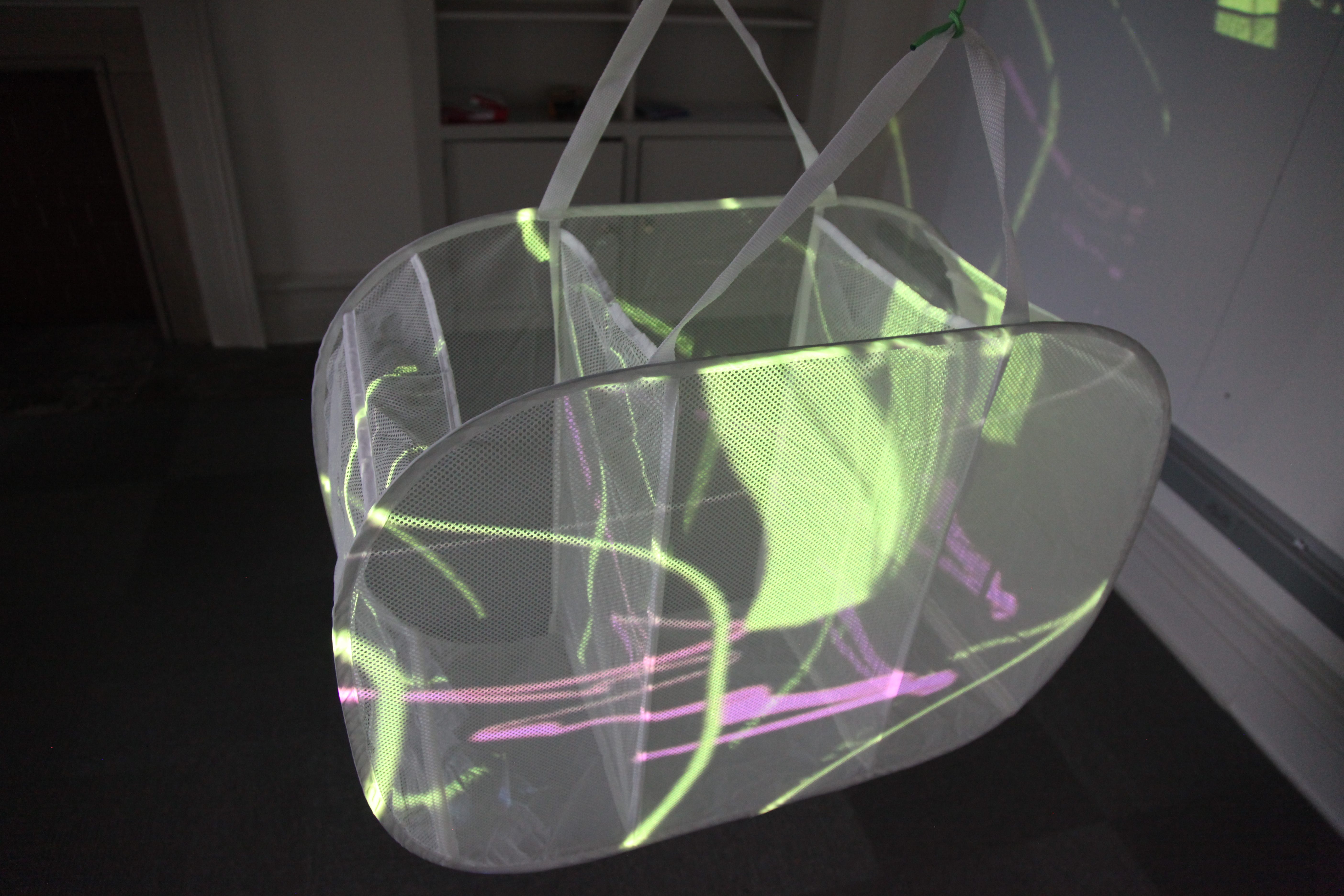
The relationship of bodies and spaces through a virtual lens is mediated by technology. The mediation is obvious, but what is less apparent is the continual shift in relationship between bodies in space. The relationship in this project that revealed itself was the opening and closing, expanding and contracting of bodies and spaces. Bodies expanding in physical space through the performance, collapsing into points in space and further compressed into lines of code. That code is then opened processed and expanded into sequential images and translated into a flattened projection. The flat video of projection is expanded on the mesh laundry bag, and further activated by people viewing it from multiple angles. The digital/virtual seems to change the relationship of bodies in physical space from a stabilized sense of presence to a destabilized fluctuation of presences. Virtual reality opens multiple dimensions that the artifacts of our bodies, spaces and actions are expanded and contracted. In and between each translation give rise to creative activity of bodies and spaces.
There are some problems thinking and writing about AI, intelligence, or consciousness not derived from a human perspective, learning, or experience. I think it may be simply impossible to understand or comprehend. Even amongst humans there is a barrier between people of a different gender, race, class, culture, and ect. Differences from human to human experiences can never be fully rendered across our species however humans can thoughtfully share experiences and emotions. I don’t think we can expect a full translation from human to AI or vis-versa. A sentient AI would naturally have a unique experience, and perspective. Even with the greatest technological innovations the experience of an AI would be unique to it, and maybe unique amongst AI there by having distinction among AI.
The closest we may ever get to understanding AI is that we don’t. Not in the technical sense, not in the way it works or processes, but in its experience and priorities. It’s even hard to imagine whether AI would or wouldn’t have anything like experience or priorities. If it did, can we assume they would resemble our own? Film, and fiction the dominant location of AI right now makes assumptions of AI consciousness.
Spike Jones’s science-fiction film Her reveals the challenges in thinking about how humans think about AI both on and off screen. In the initial sequence of interactions between the AI Samantha and the human Theodore the difficulty in translating the experience becomes apparent in both the narrative and in the meta story.

Theodore: Yeah, actually. How do you work?
Samantha: Well, basically, I have intuition.
I mean, the DNA of who lam…
…is based on the millions of personalities
of all the programmers who wrote me.
But what makes me “me”
is my ability to grow through my experiences.
So basically, in every moment, I’m evolving.
– Just like you.
Theodore: — Wow.
That’s really weird.
Samantha: — Is that weird? Do you think I’m weird?
Theodore: — Heh.
Kind of.
Samantha: Why?
Theodore: Well, you seem like a person,
but you’re just a voice in the computer.
Samantha: I can understand how the limited perspective of
an un-artificial mind would perceive it that way.
– You’ll get used to it
The programing of Samantha becomes the substitute for education, development, growth, understanding and all the complexities that create humans and their behaviors. Even if human development could be collapsed into algorithms and data, then expressed through software the experience of that would be very unique to AI experience. It could be akin to growing up on different continents in different time periods to different parents. The outcomes would be unquestionably different. Even Samantha’s understanding that “she” would have to communicate how “she” works would be an experience quite different to human experience. In this narrative Samantha understands that Theodore finds it weird that “she” is “just a voice in a computer” by replying, “I can understand how the limited perspective of an un-artificial mind would perceive it that way”. It is not that the two characters in this narrative are unable to communicate or relate in fact they eventually fall in love. It’s that the characters have two very different perspectives, experiences, and understanding. Following that line of logic, the writer of this script would be completely unable to understand the experience of an AI being. The AI of fiction is the culmination of human experience and desire. Writing about the experience of an AI or what sentient life may or may not do is done from the human perspective. Fiction about AI is a re-genesis story of human-kind. It is the story of a human reborn without body suddenly endowed with mental super powers.
This may not seem relevant as there are more than enough fictive or “non-existent” characters in human history than there have been McDonalds Hamburgers. The difference is that the chance of actually finding Moon people is pretty far off however a sentient AI is a non-fictive possibility within 100 years. Human understanding of a sentient being, or a new species would be completely a miss. Can humans even decipher what is alive or not?
The fiction we write about AI in movies like Her are still just reflections of human biological drive, motives, perspectives, memory, culture, class, thought. Humans write movies and fiction from what they know, how they know it. Everything that humans do, think, and say is in a large portion driven by biology and learned experience. AI that does not have that would not be able to fully grasp humans, by the same token humans would never fully understand AI or alternate forms of consciousness. What humans write are from the perspectives of humans. Fiction about AI passes now just fine, but when the time comes AI will have to write its own story (provided that’s what AI would be inclined to do).
Her. Directed by Spike Jonze. Performed by Joaquin Phoenix, Amy Adams, Scarlett Johansson. Https://www.springfieldspringfield.co.uk/movie_script.php?movie=her. Accessed September 14, 2018.
Her. Directed by Spike Jonze. Performed by Joaquin Phoenix, Amy Adams, Scarlett Johansson. United States: Annapurna Pictures, 2013. You Tube Movies. Accessed September 14, 2018. https://www.youtube.com/watch?v=C51B50Qh6sI
